The Adriatic Sea, Greece
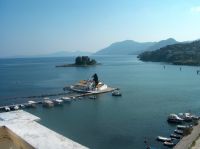 CORFU
CORFU
The most popular of the Ionian Islands. It is a very green island and a mixture of the civilizations that have passed through at various times. The town of Corfu impresses and charms the visitor with its two forts, narrow streets, tall houses, arcades, Venetian-built Town Hall, church to Saint Spyridon, the Corfu island’s patron saint, flower-filled gardens, and balconies with their superb wrought-iron fences. Flooded with sights, Corfu is a small paradise on Earth. From Paleokastritsa to Kanoni, from the Achillion to Pontikonissi and the Corfu’s northern coast, one will find crystal water scenic coves greenery and vegetation that ‘sinks’ into the deep blue sea. Ag. Georgios, Ag. Stephanos, Kaminaki, Dassia, Benitses, Agni, Arilas, Barbati are some of the beaches you must visit on your Adriatic Sea yacht charter.
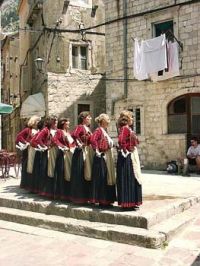 KOTOR
KOTOR
Located along one of Montenegro’s most beautiful bays is Kotor, a city of traders and famous sailors, with many stories to tell. The Old City of Kotor is a well preserved urbanisation typical of the Middle Ages, built between the 12th and 14th century. Medieval architecture and numerous monuments of cultural heritage have made Kotor an UNESCO listed “World Natural and Historical Heritage Site”. Through the entire city the buildings are criss-crossed with narrow streets and squares. At one of them there is the Cathedral of Sveti Tripun , a monument of Roman culture and one of the most recognisable symbols of the city.
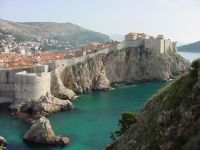 DUBROVNIK
DUBROVNIK
Traveling through Croatia, Dubrovnik Region offers immense and rich experiences to every visitor. From the coastal to the continental parts, Croatia’s rich cultural heritage, combined with its magnificent natural beauties, make it the perfect place to spend your vacation at. Dubrovnik was founded in the first half of the 7th century by a group of refugees from Epidaurum (today’s Cavtat). The settlements were separated by a channel which was filled in 12th century, present Placa or Stradun, and since than the two settlements have been united. At that time the city walls started to be built as a protection from several enemies who wanted to conquer Dubrovnik.
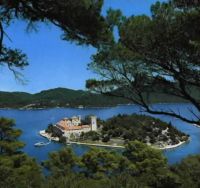 MLJET
MLJET
The Island of Mljet – in southern Croatia, close to world famous city of Dubrovnik, one of the most beautiful islands in the world is located – island of Mljet. Ancient Greek poet Homer writes about this island in Odysee, as the hero Odyssey sails in this region. Apostle Paul mentions this island on his voyage through Adriatic and visits the island on his way to Rome. Just as the fate brought many visitors to this island throughout centuries, today’s visitors are coming to experience tranquility of Mljet. Thick green forests of Aleppo pine encircle the lakes and shores of National Park Mljet. Two connected salty lakes, Malo Jezero (Small Lake) and Veliko Jezero (Big Lake), are nature’s masterpieces. Small forested island of Saint Mary in the Big Lake, within the National Park, is a setting for a 12th century Benedictine monaster.
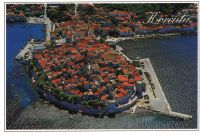 KORCULA
KORCULA
The island of Korcula and the peninsula of Peljesac were inhabited even in the Neolithic Age, i.e. six to eight thousand years ago. There are numerous archeological findings from that time, ranging form the first settlements, caves, tumili, and old stone buildings (gradine) to the earliest tools such as stone axes, pieces of ceramics and flint knives. The most important localities dating from that time are: Vela Spilja (BigCave) near Vela Luka, Gudnja and Spila on Peljesac, and Jakasova spilja (Jakas’s Cave) near Zrnovo. There are also numerous tumuli and stone buildings, the earliest types of fortified settlements, using natural unworked stone; they are most often situated on peaks and hills, providing a good view and difficult access for the possible invader. It would appear that the whole territory of Korcula and Peljesac was parceled out according to zones of interest.
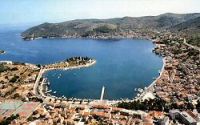 VIS
VIS
Is an island in the central Dalmatia with area of about 90 km2. Limestone crests hils are covered with macchia and fertile valleys, covered with red soils and interspersed with sand dunes, are cultivated with vines. The main settlements on the island are Vis and Komiza. Good quality accommodation in hotels or private apartments, unpolluted environment with the crystal clear sea and marine scenery as well as the local specialities – seafood from the cleanest part of the Adriatic, various sports and recreation opportunities, they all constitute the offer for your vaccation on Vis. Incredible history dating from Roman times can be found all arround the Vis island – roman city of Issa with square (agora – forum), the inscription by the hero Calius from the 4th century BC (the oldest verse found in Croatia), a bronze head of Aphrodite, fortreses, Franciscan monastery etc. make this place worth visiting. Fantastic nature with numerous bays and beaches that offers the peace and tranquility joined with traditional small home restaurants where you can eat in the surrounding of the home environment and try some local delicacies like lamb, weel or octopusy in the pot, fresh fish, sheep and goat cheese, local wine and herbal spirits etc. will make your hollidays on Vis memorable.
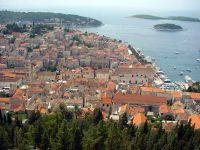 HVAR
HVAR
Island of heather, sunshine and crickets, the island of lavender, sage and wine and the island of rosemary and secluded coves. Attractive in the summer just as in the winter, with pleasant Mediterranean climate, rich vegetation of palms, aloes, pine trees, laurel, rosemary and lavender and peaceful coves and islets filled with a multitude of pleasant scents. Since Hvar lay in the middle of the main sea routes, history has left here many traces, maybe more so than on any other Adriatic is land. The finds from Grap?eva and Markova spilja (caves) have enabled the archaeologists to identify the so-called Hvar culture (around 3500to 2500BC). The examples of painted and encrusted pottery, with their various spiral motives, are among the most decorative artefacts from pre-Illyrian times. They are part of the general Aegean culture but were also further developed on Hvar.
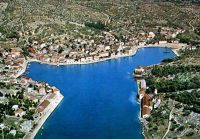 BRAC
BRAC
The largest island of the central Dalmatian group of islands, the third largest among the Adriatic islands; area 394.57 sq km; population 13,824. It is separated from the mainland by the Brac Channel, from the island of Solta by the so-called Splitska Vrata (Split Gate) and from the island of Hvar by the Hvar Channel. The highest peak of the island, Vidova Gora (Vitus’ Mount) (778 m), is also the highest peak of all Croatian islands. The limestone part of the coast is rocky and steep, while the rest is rather low and sandy (on the southern side from Farska to Bol, and on the northern side from Sutivan to Supetar). The island landscape is dominated by a karst limestone relief, with numerous gullies, crevices, cavities, round valleys and coves. Milder forms of the relief, with brown Primorje soils (the most fertile on the island), are found mostly in the interior.
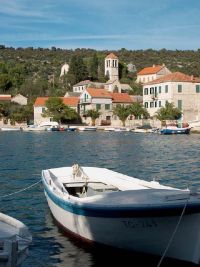 VELI DRVENIK
VELI DRVENIK
This islet close to Trogir ia an attractive location for vacation without too much noise and crowds of tourists and there is not much local population either. In winter, in Veli Drvenik there are hundred persons at the most. If you go to visit the place on foot, this can also be an adventure because there are many neglected paths so one needs to be very careful where to put a foot. Veli Drvenik has an architecturally interesting church with two facades – the old one and the new one – that overshadow one another. However, there is no priest in the village. Gallery Tramontana is also an attraction because apart from the possibility of purchasing original souvenirs you can buy homemade products such as olive oil, lavender oil etc. That is all about Drvenik. For the lovers of quiet, past times and more psychologically than physically distanced civilization, Drvenik is nevertheless a good choice.
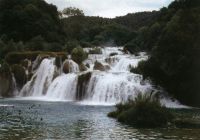 VODICE
VODICE
Has been praised by thousands of tourists for its tourist acievements. It is one of the best known tourist destinations on the Adriatic not only because it can accommodate a large number of tourists but for its tourist facilities and entertainment offered. It is 12km northeast from Sibenik, situated along the coast in a large bay. It is well connected to other centres by the Adriatic tourist road and there are numerous ferry lines, too. It was first mentioned in 1402 although it was founded already in the Roman times as Arausa. It’s name derives from the word meaning water sources which supplied the whole area. The defense walls from the times of the Turks with the Coric tower testify the past times. Other similar monuments are St.Cross’ church on the former graveyard, built in 1421 and the parish church in the town centre built in 1746. On the nearby hill Okit during the Turkish invasions, refugees founded a settlement and on its top the chapel Lady of Mercy was built in 1660.
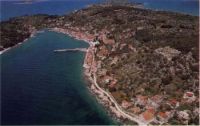 PRVIC
PRVIC
Is only about a half mile far from the mainland which makes it the closest of all the islands in Sibenik archipelago, to the coast. It is a natural extension of the island Zlarin which is proved by numerous underwater shallows and the Razenik promontory as well as the islet of Lupac. It covers total of 2.37km2 spreading from the north point of St.Lucy’s to the south point of St.Anthony’s 3.1km in length. It was populated in the early Middle Ages and it name, probably derives from Prvica or Prvina which is a name for the God of spring of the first Croats. It was more intensively populated in the 15th ct. when on this island many refugees from the mainland who fled from the Turkish invasions, found safety. First settlement they founded was Luka and soon after that Sepurine was founded. Luka is situated on the eastern side of the island in a natural harbour of St.Luke’s which is well sheltered from the winds.
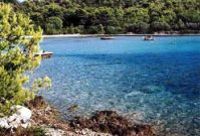 PASMAN
PASMAN
The island of Pasman forms a part of the Zadar archipelago. The picturesque Pasman Channel, with many islands resembling scattered pearls, separates it from the mainland and the towns of Zadar and Biograd. The rapid stream that changes its course every 6 hours makes the sea a very clean part of the Croatian Adriatic, alredy known for its clearness and transparence. Very early humans settled in the area of Pasman /60 sq km/. Single archeological finds witness to the way of life of the early stone age /Paleolitic/ cultivators who inhabited this part of the Adriatic. We should mention Illyric towns, gradine – primitive fortifications at elevated sites, Roman ruins, ville rusticae, various mosaics, a stone statue of St. Michael /12th century/ in Nevidjane and many others.
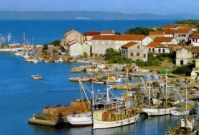 UGLJAN
UGLJAN
The island of Ugljan is the garden suburb of Zadar. It has been settled since Roman times, and the name derives from an abundance of oil. There are towns all along the 22-kilometer long island. The main center and summer resort of Preko is also the ferry port. In front of the Jaz beach, known for its fine sand, lays the verdant islet of Skoljic, thick with pine and palm trees, a frequent target for swimmers. The Franciscan monastery there dates from the fifteenth century. The small island Osljak, covered by cypress trees also has an idyllic appearance. There is a small picturesque village of fishermen and sailors. The tourist resort of Kukljica has beautiful beaches on both sides of the island. Every August there is the famous feast of Our Lady of the Snows, with a pageant and fishing boats’ convoy from the village to the church in the Zdrilac strait, where, says the legend, it snowed in early August some four hundred years ago. The ancient fishing village of Kali, whose patron saint is St. Lawrence, boasts the best fishermen and sailors in the whole of the Mediterranean.
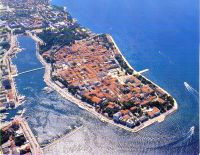 ZADAR
ZADAR
For centuries the capital city of Dalmatia and today the centre of the region. A city with a rich heritage of world importance, visible at every step. The Roman Forum from the 1st century, St. Donatus’ Church from the 9th century is the most famous medieval basilica and trademark of the city. The reconstructed Romanesque St. Grisigono’s Church from the 12th century and the St. Mary’s bell tower from the year 1105; the St. Anastasia’s Cathedral from the 13th century; the People’s Square with the City’s Lodge and Guardhouse from the 16th century, as well as the mighty fortification walls with first class Sea(farer’s) and Land gates from the 16th century followed by the Three and Five Wells Squares and many palaces, villas and other historic monuments.
ITINERARY
Day 1 Corfu Greece – Kotor Montenegro Miles 200
Day 2 Kotor – Dubrovnik Miles15
Day 3 Dubrovnik – Mljet – Korcula Miles68
Day 4 Korcula – Vis Miles 45
Day 5 Vis – Hvar – Brac Miles 30
Day 6 Brac – Veli Drvenik – Vodice Miles 38
Day 7 Vodice – Prvic – Pasman Miles 30
Day 8 Pasman – Ugljan – Zadar Miles 38
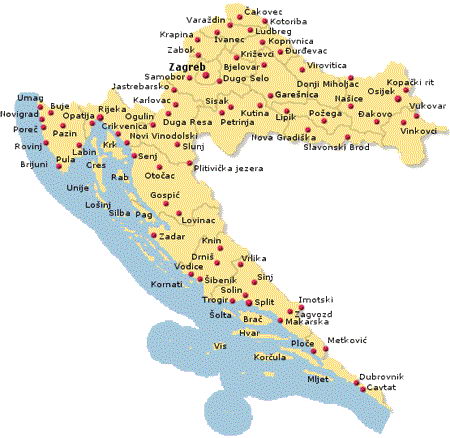
Contact Us Today
Call or text now: +1 954-632-3555
Email: info@allyachtsworldwide.com
